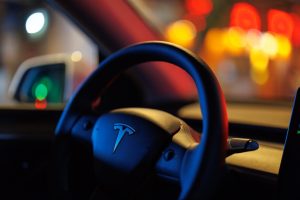- 🚗 Tesla plans to release Full Self Driving (FSD) for Right Hand Drive (RHD) markets between late Q1 and early Q2 2025.
- 🌎 The initial FSD rollout in 2025 will also target Left Hand Drive (LHD) markets in Europe and China.
- 📈 FSD is expected to undergo significant improvements, with new versions featuring enhanced capabilities expected in the near future.
- 🤖 Tesla is heavily investing in AI technology, with supercomputer projects like Cortex and Dojo to bolster FSD and Autopilot developments.
- 🌐 The release of FSD for RHD markets aims to expand its availability globally, reaching more Tesla owners in countries like the UK, Australia, Japan, and others.
In a groundbreaking move set to transform the automotive landscape, Tesla is preparing to roll out its Full Self-Driving (FSD) technology to Right Hand Drive (RHD) markets between late Q1 and early Q2 2025. This update is one of the most highly anticipated in the automotive world, as it signals Tesla’s commitment to globalizing its cutting-edge autonomous driving capabilities.
Accelerating Into the Future: Tesla’s FSD Rollout
Tesla’s announcement came directly from CEO Elon Musk, who outlined the company’s roadmap for bringing FSD to various markets. The initial focus for this rollout is on Europe and China, where Tesla plans to introduce FSD to Left Hand Drive (LHD) systems. However, the ambitious timeline to make FSD available in RHD markets soon after reflects Tesla’s commitment to expanding its global presence.
Key Highlights of Tesla’s FSD Rollout Plan:
- Timeline and Markets: The FSD is expected to debut for LHD markets in early 2025, with RHD markets like the UK, Australia, Japan, and others to follow closely.
- Regulatory Approvals: Tesla’s success in these markets hinges on obtaining regulatory approval, which is crucial to its strategy for global expansion.
- Targeted Markets: With a focus on making its technology widely available, Tesla is set to target regions with significant demand for RHD vehicles.
Unveiling FSD Version 13: Improvements and Innovations
Tesla is not just expanding geographically; the company is gearing up to launch significant enhancements to its FSD system. The upcoming release, FSD Version 13, promises several improvements:
- Enhanced Capabilities: Improved algorithms are set to offer increased safety and reliability, with six times the mileage between required interventions.
- Unified Model Approach: The release roadmap indicates Tesla’s shift towards a more unified model, enhancing performance consistency across its AI-powered vehicles.
- AI Advancements: These improvements underscore Tesla’s ongoing commitment to investing in artificial intelligence as the core driver of FSD’s evolution.
Supercomputing Power: The Backbone of Tesla’s AI Development
Tesla’s advancements in FSD technology are fueled by significant investments in AI infrastructure, particularly through its supercomputing projects:
- Cortex Supercomputer: Located at Giga Texas, this massive cluster of 100,000 Nvidia GPUs is designed to support FSD and Autopilot technologies.
- Dojo Project: With a $500 million investment in Buffalo, New York, the Dojo supercomputer project aims to enhance Tesla’s computational power for training AI networks.
The Road Ahead: Global Impacts and Market Expansion
Tesla’s strategic push to bring FSD to RHD markets is more than a technological feat; it represents a significant step towards making autonomous driving a global norm. By expanding into new markets, Tesla not only strengthens its position as a leader in electric vehicles but also contributes to the broader acceptance and integration of autonomous technology worldwide.
Final Thoughts
As Tesla prepares to introduce FSD in RHD markets, drivers in these regions can anticipate a transformation in their driving experience. With the automotive industry steadily moving towards autonomous capabilities, Tesla’s efforts in AI and supercomputing place it at the forefront of this evolution, promising a future where self-driving cars become a part of everyday life.





